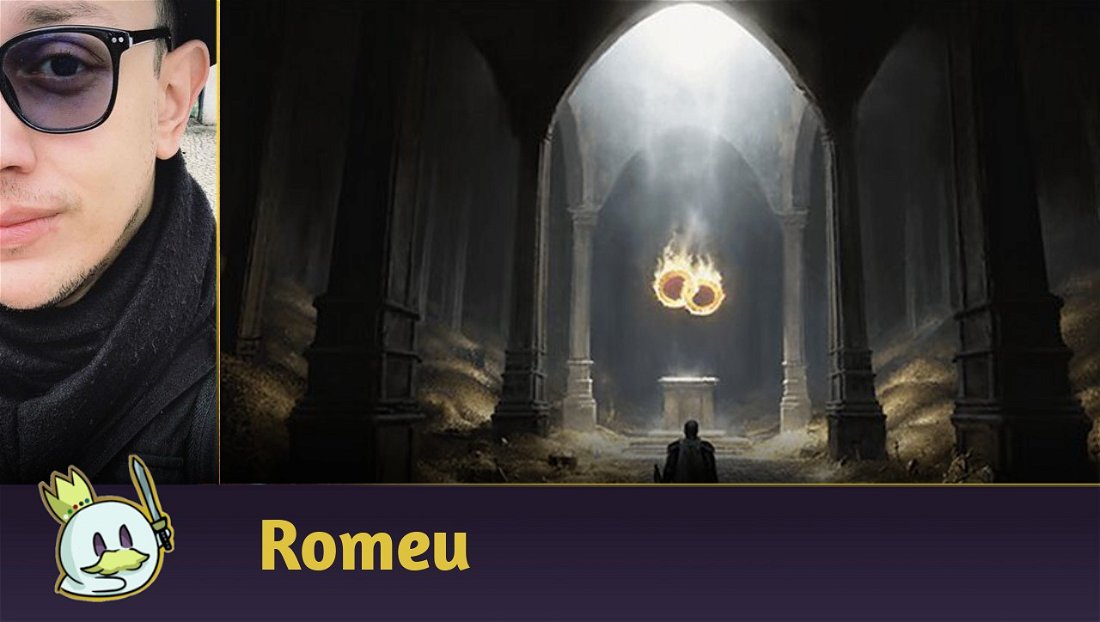The majority of Magic's mechanics are self-explanatory and leave little room for rules to become complicated, like Flying and Reach. However, there are those abilities that make players question the entire structure the rules. The concept of "Phasing" is undoubtedly one of the most iconic examples of Magic's highly complicated mechanics.
In this article, we will explore the uses of this ability, as well as its peculiarities, different appearances, and applications over time, and discuss some of the best cards that make use of Phasing.
About Phasing

Phasing originally emerged in the Mirage block and allows cards to shift between phases. Originally, this ability was entirely encapsulated in the keyword "Phasing," which initially served as a way to upgrade permanents, granting access to better cards in exchange for a minor drawback: cards with Phasing simply vanish during your upkeep and return to the battlefield during your next turn, effectively staying on the field for "half" the game. And right here, at the very beginning when they created this ability, things already get complicated.
When we say the card "simply vanishes," we are referring to phasing out, and we are not suggesting it goes to exile, the graveyard, your hand, or even your deck. Nor are we saying that the card that phased out has left the battlefield. In other words, when an Ertai’s Familiar phases out, it doesn't leave the game, and its card milling ability is not activated.
The question here is, "If the permanent disappears but doesn't go to exile or the graveyard, where does it go?" Simply put, it doesn't go anywhere. Permanents that phase out simply vanish until they can phase in again. They've disappeared from the battlefield, and for all intents and purposes, they cease to exist.
The reverse holds true for cards that phase in, abruptly re-entering the battlefield. Just as leave the battlefield effects are not triggered by phasing, neither are enter the battlefield effects.
Phasing Transition

In a nutshell, at the beginning of your untap step, before untapping your permanents, the game rules check if there are cards with Phasing in the phased-out state and make them disappear from the battlefield. It also checks for any cards outside the phased state to bring them back into the game.
It's important to differentiate cards with Phasing from cards that are merely phased out. This is because there are various ways nowadays to temporarily remove a permanent from play by phasing it out, and the need for the keyword "Phasing" for it to return could complicate the rules and card text.
Thus, cards with Phasing always phase in and out obligatorily, alternating their presence on the battlefield each turn. However, there are also cards like Spectral Adversary that can phase out other cards without having the Phasing ability themselves. Lastly, phased-out cards, whether they have Phasing or not, always phase in again during the next upkeep, unless other cards like Disciple of Caelus Nin dictate otherwise.
Phasing was frustrating for the player using it. Their creature would enter the battlefield, phase out the next turn, and only return on the third turn, making a creature with the ability take three turns to attack.
These days, the Phasing mechanic is no longer used on cards precisely because it's difficult to understand and doesn't lead to enjoyable or beneficial situations for players who had to deal with their cards constantly disappearing from the battlefield. On the other hand, the mechanic of phasing out cards with effects is becoming more prevalent. It is generally used as a form of removal for white and blue colors and is considered the "healthier" aspect of Phasing, allowing for aggressive and defensive plays by removing opponent's permanents and protecting your own.
Phasing and Attached Objects
Now that we understand the crazy dance of phasing in and out, let's move on to the next level of mental confusion. As we know, Magic offers various objects that can be attached to our cards, such as counters, equipment, and auras. Typically, when cards leave the battlefield, even if through effects like Ephemerate that bring them back into play shortly after, any objects attached to the permanent that left the battlefield are lost.
However, when a permanent phases out, it doesn't leave the battlefield; it goes to its own mystical dimension, taking its equipment, auras, and counters with it. As soon as a permanent phases back in, it reappears with all the objects previously attached to it. Moreover, cards attached to the permanent also phase out.
This opens up various strategies, such as phasing out a creature to protect an important equipment or aura that's about to be destroyed or phasing out an opponent's creature so that the objects on it cease to function, preventing your opponent from switching the equipment's bearer or worsening a spell that relies on artifacts or enchantments on the battlefield.
Top Phasing Cards
As mentioned earlier, Phasing was designed to weaken powerful spells and enable them to be played for less mana in exchange for being on the battlefield for only half the time. Nevertheless, when we shift the focus from cards with Phasing to cards that merely allow a permanent to phase out, we gain access to many gameplay tools for casual and competitive matches.
Kaito Shizuki

We can start by discussing cards that phase out with Kaito Shizuki. At the end of the turn it enters the battlefield, it phases out, just like the true ninja it is. This greatly aids in protecting Planeswalkers, a type of card that is frequently aimed at the battlefield and targeted to many damage spells, removal, and attacks.
Unfortunately, this ability only takes effect on the turn this card enters the battlefield, so you'll need to blink it or return it to your hand if you want to use this protective effect again.
The Phasing of Zhalfir

Here, we have a global removal that allows you to phase out two of your creatures and prevents them from phasing in again until the saga leaves the game. With this, you can safeguard your best creatures against impending battlefield devastation while wiping out your opponent's ranks entirely.
Moreover, this saga replaces destroyed creatures with 2/2 Phyrexian creature tokens, so even your defeated creatures will be replaced by tokens that can affect the game. The strategy here is to keep your best creatures phased out and leave weaker creatures on the battlefield to obtain better tokens than the creatures that were destroyed, and maintain your strongest units to deal with the remaining tokens your opponent has.
Oubliette

This one's an interesting story. Oubliette came from Arabian Nights, the game's second expansion, and its original text was written long before the concept of phasing in and out existed. For many years, this enchantment was considered complicated to translate into modern terms, making it highly sought after and expensive due to its scarcity, especially in the Pauper format where it had a significant impact.
Oubliette was a different kind of exile enchantment compared to white enchantments like Oblivion Ring. Cards like Oblivion Ring remove the card from the battlefield, exiling it and keeping it in exile until the enchantment leaves play, triggering all leave-the-battlefield and enter-the-battlefield effects, as well as resolving other situations specified in the rules, such as equipment, counters, and auras. However, Oubliette didn't do any of that. It simply concealed the creature beneath the card, preserving all the objects attached to it, until the enchantment left play, and it returned to the battlefield. Does this sound familiar based on everything you've read in this article?
Thus, Oubliette had its convoluted text rewritten to: "When Oubliette enters the battlefield, target creature phases out until Oubliette leaves the battlefield. Tap that creature as it phases in this way," turning the coveted enchantment into a card that allows creatures to phase in and out.
Teferi’s Protection

Here, we have the card that brought phasing mechanics back into the spotlight in Magic and became extremely coveted for Commander and even Legacy formats. With the effect "Until your next turn, your life total can't change, and you have protection from everything. All permanents you control phase out," it's clear what you'd want to do with this card: protect yourself from global removals, powerful spells, and devastating attacks from your opponent, all for the modest cost of three mana.
With Teferi’s Protection, your board will always be able to withstand one more turn and protect itself from the most potent board-wiping spells. This not only ensures the card's quality, but also its price, making it one of the most powerful and desired board control spells in all of the Magic.
Final Thoughts

Phasing is a powerful mechanic that arose from the development team's desire to create an ability that weakened cards. Nowadays, it's perfect for various situations, allowing us to protect our permanents effectively and take control of the game. As the game evolves, undoubtedly, more uses for the mechanic will be discovered, offering new ways to play with it.
Until next time!














— Comentarios 0
, Reacciones 1
Se el primero en comentar